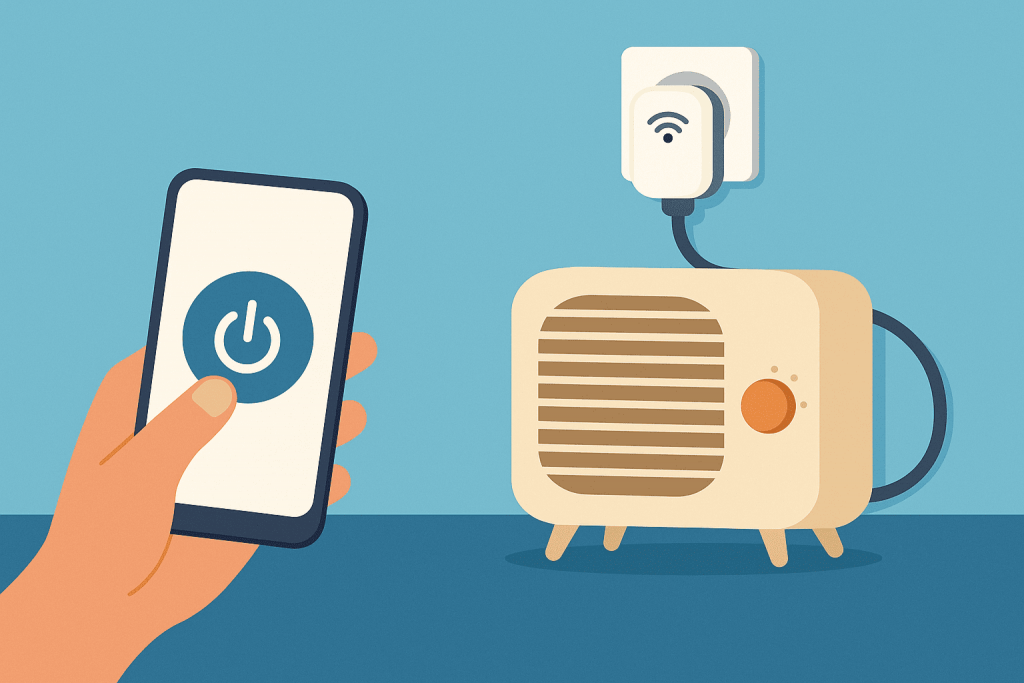
At a time when electricity supply is often unstable and energy saving has become a matter not just of economy but also of protecting household appliances, smart plugs come to the rescue. These small devices can turn an ordinary electrical appliance into part of a smart home, allowing users to remotely control power, monitor energy consumption, and even automate device operation. But how exactly do they help during outages, and why have they become so popular in recent years?
Energy Under Control
A regular socket simply provides current, while a smart one interacts with the user via Wi-Fi or Bluetooth. Inside it are a microcontroller and a communication module that connect it to a mobile app. Through this app, you can turn devices on or off with a single tap — even when you’re not at home. However, the main advantage isn’t just convenience, but the ability to monitor electricity consumption in real time.
Most models include a monitoring feature that shows how many kilowatt-hours a specific appliance consumes. This helps you identify which devices use the most energy and optimize their operation — for instance, by turning off chargers, heaters, or lights when they’re not needed.
How They Help During Outages
During scheduled or emergency power cuts, smart plugs can automatically restore power to critical devices — such as routers, pumps, or refrigerators. Some models support automation scenarios: if power goes out, the plug remembers the device’s previous state and restores it once electricity returns. This is especially useful when you’re away and can’t manually control the process.
Additionally, these devices work well with backup power systems like uninterruptible power supplies (UPS) or inverters. For example, you can configure them so that when running on battery power, energy-hungry appliances are turned off, leaving only essential devices powered. This extends backup time and helps prevent system overload.
Automation That Simplifies Life
Modern smart plugs support schedules and timers. You can set specific times for devices to turn on or off — for example, having a heater start an hour before you return home, or stopping a laptop from charging after a set duration. Such features not only save energy but also prolong the lifespan of your appliances by preventing overheating or excessive load.
Smart plugs can also integrate with voice assistants like Google Assistant, Alexa, or Siri. This allows users to control them by voice or create complex scenarios like a “night mode,” where the lights turn off but chargers remain active.
Precision and Safety
Safety deserves special attention. Many models feature built-in protection against overloads and short circuits. If the current consumption exceeds the limit, the plug automatically cuts off power to the device. This not only prevents equipment damage but also protects your home from fire hazards.
Moreover, thanks to cloud data storage, users can view their electricity consumption statistics even when they’re away from home. Some manufacturers also offer synchronization with broader smart home systems that take into account data from temperature, humidity, or motion sensors to optimize device operation in real time.
A Step Toward an Energy-Efficient Future
In a home or office setting, smart plugs can save tens of kilowatt-hours per month, but on a larger scale — such as in a business or data center — this logic becomes even more valuable. Automatic energy monitoring, load balancing, and timely shutdown of inactive systems are the keys to stability and efficient resource use.
That’s why major companies operating large IT infrastructures pay great attention to energy efficiency and power stability for their servers. The use of modern monitoring systems, backup power, and energy optimization solutions allows data centers to remain reliable even during peak loads or blackouts. And for home users, smart plugs can be the first step toward achieving the same level of energy control — just in miniature.

LunaLee
Smart plugs really show how small upgrades can make a big difference during power outages. It’s nice to see energy use become clearer and to have a simple way to keep essentials running.